Jimmy Fike: In His Own Words
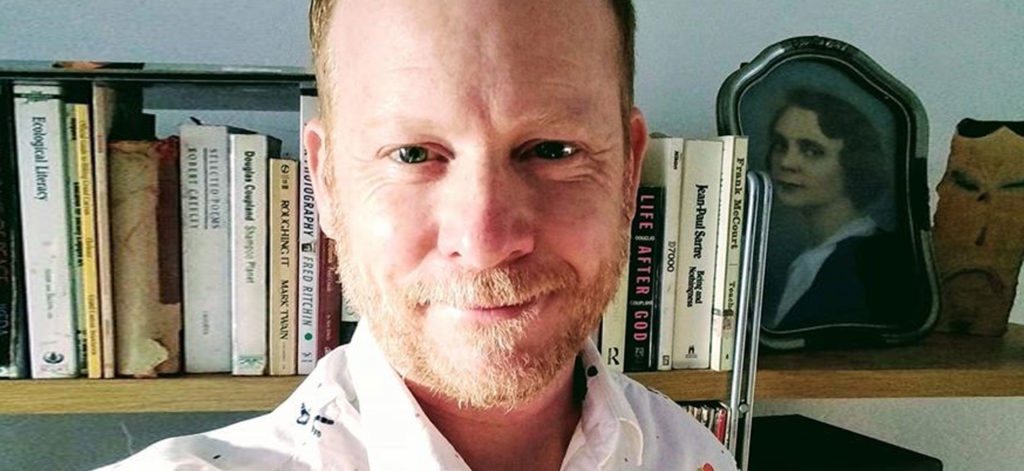
Jul, 28, 2020
ArtistsCommunityPhxArtist Spotlight
Jimmy Fike: In His Own Words
For more than a decade, photographer and artist Jimmy Fike has been dedicated to a wild edible plants series that’s taken him on many epic adventures through our country’s natural landscapes. Fike’s work, however, is about so much more than personal exploration—it’s about helping people connect with their local environments, identifying free food sources, and inspiring greater concern for the Earth we all share.
Originally from Birmingham, Alabama, Fike earned a BA in art from Auburn University and an MFA in photography from the Cranbook Academy of Art. He moved to Phoenix in 2009 to teach art at Estrella Mountain Community College, where he was appointed the institution’s first full-time art professor and where he continues to build and expand the art program.
As Fike approaches the end of his edible flora project, with a book on his work scheduled to be published in 2021 by Indiana University Press, we spoke with the artist to take a deep dive into who he is and the wild world of edible plants.
Here’s Jimmy Fike, in his own words.
“As you sit with the images, they transcend the initial appearance of scientific illustration and start to take on a more mystical presence, offering a chance to contemplate our relationship with the world of flora and the nature of plant consciousness.”
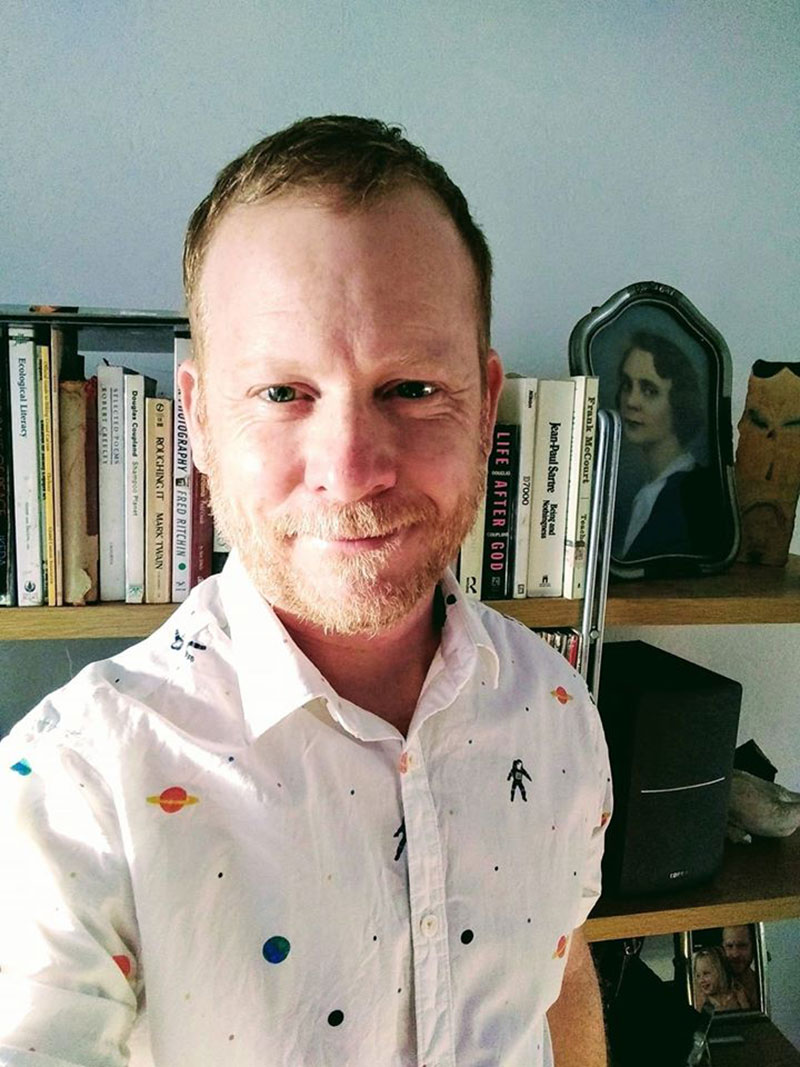
PhxArt: How did your journey as an artist begin?
Jimmy Fike: I’ve been interested in art and nature for as long as I can remember. As a kid, I’d walk around with Roger Tory Peterson’s field guide and paint pictures of birds and fish. Even though I lived in the suburbs during my boyhood, forests and ponds were nearby, so I’d set out for adventures. When I was a bit older, I got a subscription to Mad Magazine, and it really resonated with me so I started drawing irreverent, sardonic cartoons.
PhxArt: In which media do you prefer to work, and what’s the project you’ve been most focused on these days?
Fike: I’ve made work in video, installation, sculpture, drawing, and painting, but photography is my home base and takes up all my time these days. For 13 years, I’ve been working on my series J.W. Fike’s Photographic Survey of the Wild Edible Botanicals of the North American Continent; Plates in Which the Edible Parts of the Specimen Have Been Illustrated in Color. As I approach the end of the series and upcoming book publication, the work takes up all of my creative oxygen.
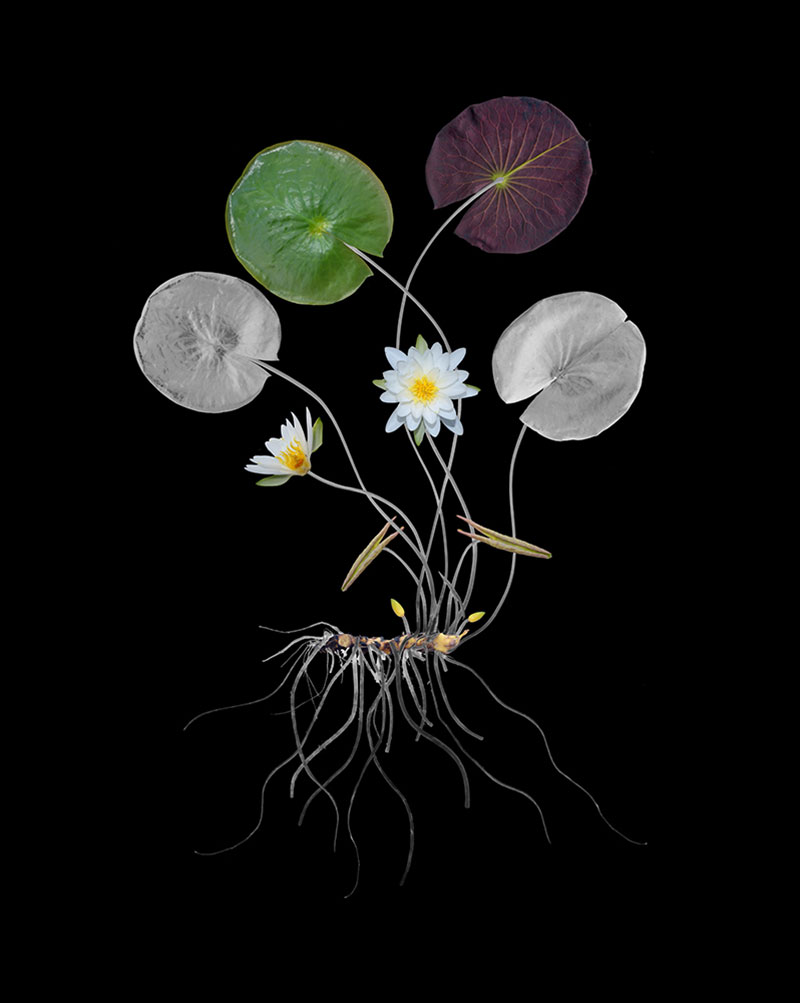
Jimmy Fike, Water Lily, 2020. Archival pigment print. Courtesy of the artist.
PhxArt: What’s the scope of the project, and what do you hope to achieve with it?
Fike: The work is technically photography but uses Photoshop copiously and borrows heavily from drawing and montage techniques. The images are meticulously constructed and become archetypal versions of the plant. I’ve photographed about 150 plants and worked in 15 different states as I endeavor to create a continent-wide collection of plants. My goal is to be able to mount biome-specific exhibitions anywhere in the continental United States.
I utilize a system that makes the plants and their edible parts easy to identify. The images help direct viewers to free food that grows all around them and hopefully provide an experience that transforms one’s relationship with place and landscape. As you sit with the images, they transcend the initial appearance of scientific illustration and start to take on a more mystical presence, offering a chance to contemplate our relationship with the world of flora and the nature of plant consciousness. Ultimately, I hope the plants take you on a psychopomp-like journey, one of integration, transmutation, and symbiosis.
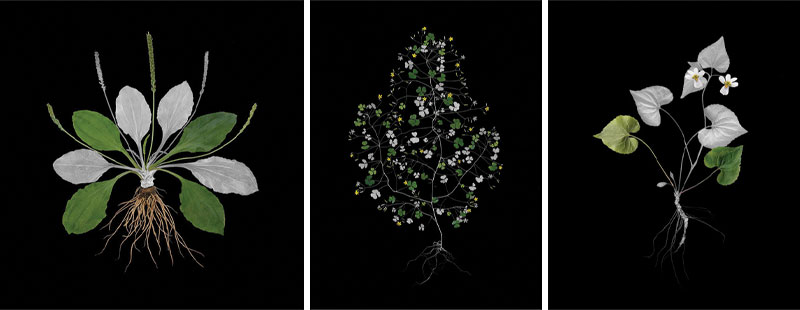
Jimmy Fike, Broadleaf Plantain, 2020. Archival pigment print. Courtesy of the artist; Jimmy Fike, Yellow Wood Sorrel, 2019. Archival pigment print. Courtesy of the artist; Jimmy Fike, Canadian Violet, 2019. Archival pigment print. Courtesy of the artist.
PhxArt: What have you learned working in the field? How has it changed your view of the natural world as well as your approach to art?
Fike: I’ve learned so much from working on this series. I’m very appreciative of all that plants have taught me. When studying plants, you learn to walk slowly, to observe in minute detail, to build a web of recognition and connection that binds you to the landscape in profound ways. I feel an incredible debt to so many Native Americans who did the centuries of work it takes to fully understand a plant’s characteristics and possible usages. Along the way, you learn so many interesting historical anecdotes. When I began this series, I wasn’t sure that photography could be used as a medium for connection and integration, that you could make images that tried in earnest to alleviate problems like alienation without sacrificing depth, that there was something beyond irony. This series has proven to me that there are boundless creative ways to use, reinvent, and deploy photography to address the contemporary world.
PhxArt: Who inspires and influences your work?
Fike: I’ve been influenced by artists who’ve undertaken epic series in the landscape, often ones who blur the lines between art, science, and adventure. John James Audubon and William Bartram immediately come to mind. A more modern influence is Joseph Beuys—his ideas on social sculpture really expanded my mind and made me want to incorporate utility, praxis, mysticism, and egalitarianism into my work.
Suzi Gablik’s writings were also instrumental in helping to generate the ideas for my edible plant series. She offered a way out of the morass of post-modernism and encouraged a generation of artists to take on big transformative ideas, be more responsive to their communities, and get past the modernist fascination with disembodied vision and capitalistic paradoxes of art as commodity.
As a very contemporary influence, I’d cite the socially engaged practice movement. Even though my work isn’t quite the same (I’m still very much interested in aesthetics and am producing images and objects), I feel like I’ve bridged the gap between photography and socially or ecologically engaged practice in interesting ways by embracing the idea that art can have a concrete functionality that borrows from the world of social justice.
PhxArt: After you wrap up your edible flora series, what’s next on the horizon?
Fike: I have so many ideas! I’m not sure which one will come to the fore quite yet. For the next three months, I need to focus on finishing the series and producing a book manuscript. After that, we’ll see.
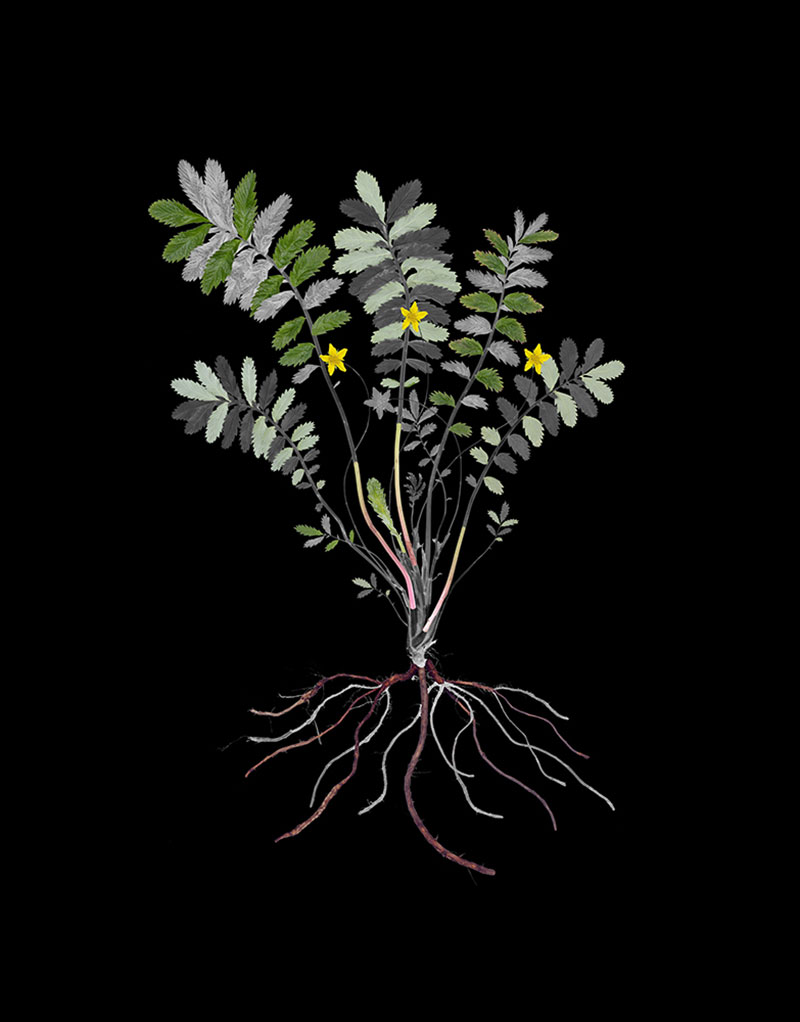
Jimmy Fike, Silverweed, 2020. Archival pigment print. Courtesy of the artist.
See more
To discover more work by Jimmy Fike, visit his website at www.jimmyfike.com or follow him on Instagram @jimmyfike. Select works by the artist are also on view through September 2020 as part of the exhibition Manic Botanic at Garvey/Simon Gallery in New York City.
To learn more about J.W. Fike’s Photographic Survey of the Wild Edible Botanicals of the North American Continent; Plates in Which the Edible Parts of the Specimen Have Been Illustrated in Color, check out the videos below, one of which provides a closer look at wild ginger featured in Fike’s 13-year project.
Video courtesy of Plantpop
#CreativeQuarantine
We’re curious how creatives are navigating the time of coronavirus. Jimmy Fike shares what’s giving him life as a creative during quarantine.
Fike: During quarantine, I’ve been able to really focus on my artwork, so that part of it has been nice, or productive at least. While working, I like to listen to the On Being podcast and have really gotten into Bandcamp. They have the most random, niche playlists from all over the globe. For the past several years, I’ve read a lot of non-fiction—art theory and history—so have made a point this summer of trying to catch up on some fiction. So far, I’ve read The Girl with the Pearl Earring, Foe, Tree of Smoke, and The Postman, along with one non-fiction book, The Devil’s Highway. They’ve all been good reads. After several days of working hard on my art and hanging out at home, I just have to get out of the house before I have a Shining moment, so I grab the pups and my camping gear and hit the Mogollon Rim.
Categories
What can we help you find?
Need further assistance?
Please call Visitor Services at 602.257.1880 or email